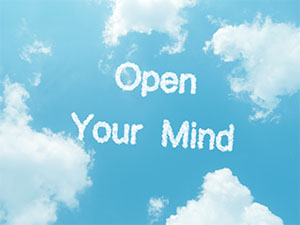Creativity is a hot topic in today’s education and business worlds. There are also a lot of contrasting opinions about what it is and how we learn it or teach it.
 Perhaps a common misconception about creativity—along with innovation and entrepreneurship—is that it somehow just magically happens for a few talented people. But we can all be creative; we just might come to it in different ways. Understanding the process used by artists helps us discover one thing in particular that stands out. Artists have a mindset that’s open to growth and discovery. They see the whole of their art as a work in progress, always fluid and changing. It may even be true within the creative process for a single work or performance; this approach is critical to their success. They determinedly examine, assess, question, and refine.
Perhaps a common misconception about creativity—along with innovation and entrepreneurship—is that it somehow just magically happens for a few talented people. But we can all be creative; we just might come to it in different ways. Understanding the process used by artists helps us discover one thing in particular that stands out. Artists have a mindset that’s open to growth and discovery. They see the whole of their art as a work in progress, always fluid and changing. It may even be true within the creative process for a single work or performance; this approach is critical to their success. They determinedly examine, assess, question, and refine.
![Andy Warhol Museum of Modern Art. Medzilaborce, Slovakia By P.matel [Public domain], via Wikimedia Commons Andy Warhol Museum of Modern Art. Medzilaborce, Slovakia By P.matel [Public domain], via Wikimedia Commons](https://artsawareness.com/wp-content/uploads/2015/01/Medzilaborce_-_Andy_Warhol_Museum_4-300x225.jpg)
They always say time changes things, but you actually have to change them yourself.
~ Andy Warhol
We can all learn to apply this same creative process in our work and daily lives if we’re willing to maintain an open frame of mind and engage everything as a lifelong learner. It’s likely not easy for some of us because we may have already learned to hold opinions and make assumptions based on what we’ve been told by others or on what we perceive as our own shortcomings or setbacks from the past. We may have a negative attitude. The real mindset of an artist leaves open opportunities for failures that are looked upon as part of a continuing evolution toward greater depth and understanding. This attitude allows artists to take everything they know and have learned—cross-disciplinary knowledge gained, memories, and skills—and combine it all together as one large experience in order to inform the present. Disparate bits of information and experiences are combined in new ways to create a new idea or way of doing things, often without a conscious effort to do so. A mindset of openness allows the synthesis to occur naturally.
Progress is impossible without change,
and those who cannot change their minds cannot change anything.
~ George Bernard Shaw
Here are a few ideas about how you can practice a mindset of creativity.
[sws_checklist]
- Practice focusing with a free and open mind. Enjoy yourself.
- Allow your conscious and unconscious minds to take part without trying to control.
- Listen to your own thought processes.
- Move your body around—sitting in place, get up, or take a walk.
- Deliberately make connections between unrelated pieces of your knowledge.
- Accept ambiguity and allow frustration, if it happens, without grabbing hold of it.
[/sws_checklist]
A mind is like a parachute. It doesn’t work if it is not open.
~ Frank Zappa
With practice, you can learn to use an artistically aware and creative mindset by allowing yourself the imaginative space that’s open to all of your unique set of experiences and understandings. You will soon see relationships between things you may never have noticed before, patterns will emerge between very different and unrelated things, and new combinations will surface that promote discovery, breakthroughs, innovation, and ingenuity. Expand your thinking to enhance your creativity. Don’t allow previous assumptions to limit your creative ability. Use the conscious and unconscious skills of an artist. It may take some practice but it’s an exciting and rewarding experience.
— Pat
Sign-up for the Arts Awareness eNewsletter and receive a free gift “Three Lessons to Begin to Make Artistic Principles Work for You in Fascinating Ways.” Like Arts Awareness on facebook.
